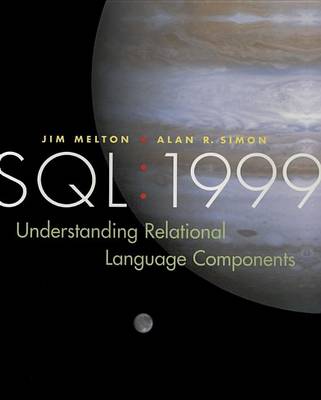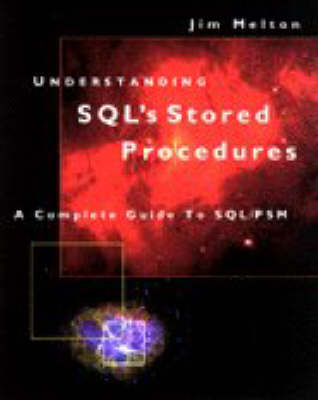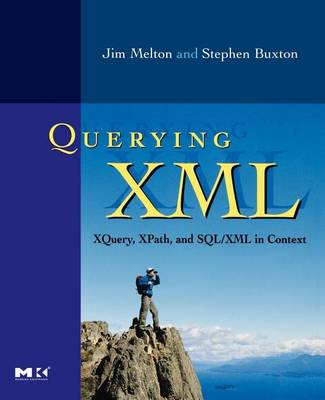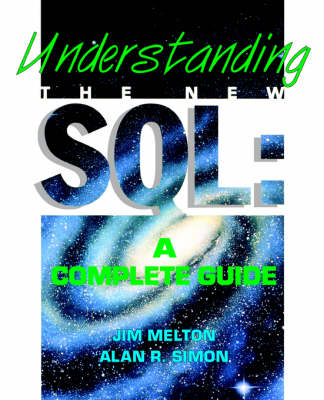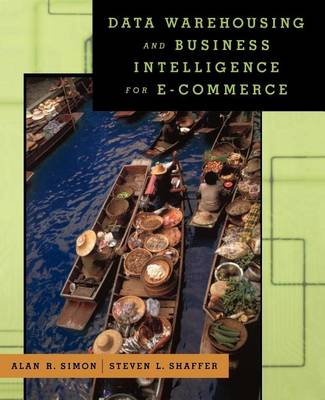The Morgan Kaufmann Series in Data Management Systems
7 total works
SQL: 1999 is the best way to make the leap from SQL-92 to SQL:1999, but it is much more than just a simple bridge between the two. The latest from celebrated SQL experts Jim Melton and Alan Simon, SQL:1999 is a comprehensive, eminently practical account of SQL's latest incarnation and a potent distillation of the details required to put it to work. Written to accommodate both novice and experienced SQL users, SQL:1999 focuses on the language's capabilities, from the basic to the advanced, and the ways that real applications take advantage of them. Throughout, the authors illustrate features and techniques with clear and often entertaining references to their own custom database.
Learn about the SQL/PSM standard from the author of Understanding the New SQL Written by a leading contributor to the development of the SQL standard, Understanding SQL Stored Procedures introduces readers to the concepts of SQL stored procedures and how they are implemented in a variety of DBMSs. The author also teaches how to best apply the powerful storage features of PSM-96, which allow you to store SQL code in a database and execute it directly within the DBMS. Using practical and interesting examples to illustrate the power of stored procedures, Understanding SQL Stored Procedures offers readers complete coverage of the language's features as well as practical advice on how to best take advantage of them in database application programming. A final section is devoted to a discussion of the next generation of SQL/PSM.
Features: Complete, practical coverage of all the features of the SQL/PSM standard in an easy-to-find format (allows use as a reference) Supplements syntax of language elements with "railroad diagrams" to better illustrate how the elements of this language work together Utilizes a real-life application as a running example of the language features Written for database product and tool developers, application programmers, and database administrators and analysts, Understanding SQL Stored Procedures will help users better apply SQL/PSM.
Features: Complete, practical coverage of all the features of the SQL/PSM standard in an easy-to-find format (allows use as a reference) Supplements syntax of language elements with "railroad diagrams" to better illustrate how the elements of this language work together Utilizes a real-life application as a running example of the language features Written for database product and tool developers, application programmers, and database administrators and analysts, Understanding SQL Stored Procedures will help users better apply SQL/PSM.
XML has become the lingua franca for representing business data, for exchanging information between business partners and applications, and for adding structure-
and sometimes meaning-to text-based documents. XML offers some special challenges and opportunities in the area of search: querying XML can produce very precise, fine-grained results, if you know how to express and execute those queries.
For software developers and systems architects: this book teaches the most useful approaches to querying XML documents and repositories. This book will also help managers and project leaders grasp how "querying XML" fits into the larger context of querying and XML. Querying XML provides a comprehensive background from fundamental concepts (What is XML?) to data models (the Infoset, PSVI, XQuery Data Model), to APIs (querying XML from SQL or Java) and more.
and sometimes meaning-to text-based documents. XML offers some special challenges and opportunities in the area of search: querying XML can produce very precise, fine-grained results, if you know how to express and execute those queries.
For software developers and systems architects: this book teaches the most useful approaches to querying XML documents and repositories. This book will also help managers and project leaders grasp how "querying XML" fits into the larger context of querying and XML. Querying XML provides a comprehensive background from fundamental concepts (What is XML?) to data models (the Infoset, PSVI, XQuery Data Model), to APIs (querying XML from SQL or Java) and more.
Advanced SQL:1999 - Understanding Object-Relational and Other Advanced Features is the practitioner's handbook to the standard's advanced features. It is not a re-presentation of the standard, but rather an authoritative, in-depth guide to its practical application. Like its companion, SQL:1999 - Understanding Relational Language Components, which explained the standard's basic features, this book will show you how to make your applications both effective and standard-compliant. This handy reference has a modular format so you can explore specific topics with ease. It is equally useful to those upgrading from earlier versions of SQL and those with no previous experience. Written by the standard's distinguished editor, Advanced SQL:1999 will complete your knowledge and support your skills like no other book can.
With the growth of Java and the rise of database-powered Web applications, the need to use Java with SQL is clear. Until now, authoritative coverage of the techniques available to meet these challenges and reap their benefits-both programming and career benefits-didn't exist.
Understanding SQL and Java Together examines all the standards for combining SQL and Java. It shows you exactly how to use their features to write efficient and effective code supporting Java access to SQL data in a variety of ways. You'll gain a thorough understanding of the relationship between SQL and Java, which will allow you to write static and dynamic SQL programs in Java, merge Java code with SQL databases and SQL code, and use other data management techniques wherever appropriate.
Understanding SQL and Java Together examines all the standards for combining SQL and Java. It shows you exactly how to use their features to write efficient and effective code supporting Java access to SQL data in a variety of ways. You'll gain a thorough understanding of the relationship between SQL and Java, which will allow you to write static and dynamic SQL programs in Java, merge Java code with SQL databases and SQL code, and use other data management techniques wherever appropriate.
An effective introduction to SQL, and a comprehensive reference for years to come. As the editor of the 1992 standard, Jim Melton is an authority on the language and its new features. Using a highly readable, conversational style, he and Alan Simon clearly present the power of SQL. They describe practical methods of using SQL to solve problems, advanced SQL query expressions, dynamic SQL, transaction models, and database design.
Data Warehousing and Business Intelligence for E-Commerce
by Alan R. Simon and Steven L. Shaffer
Published 23 May 2001
You go online to buy a digital camera. Soon, you realize you've bought a more expensive camera than intended, along with extra batteries, charger, and graphics software-all at the prompting of the retailer.
Happy with your purchases? The retailer certainly is, and if you are too, you both can be said to be the beneficiaries of "customer intimacy" achieved through the transformation of data collected during this visit or stored from previous visits into real business intelligence that can be exercised in real time.
Data Warehousing and Business Intelligence for e-Commerce is a practical exploration of the technological innovations through which traditional data warehousing is brought to bear on this and other less modest e-commerce applications, such as those at work in B2B, G2C, B2G, and B2E models. The authors examine the core technologies and commercial products in use today, providing a nuts-and-bolts understanding of how you can deploy customer and product data in ways that meet the unique requirements of the online marketplace-particularly if you are part of a brick-and-mortar company with specific online aspirations. In so doing, they build a powerful case for investment in and aggressive development of these approaches, which are likely to separate winners from losers as e-commerce grows and matures.
Happy with your purchases? The retailer certainly is, and if you are too, you both can be said to be the beneficiaries of "customer intimacy" achieved through the transformation of data collected during this visit or stored from previous visits into real business intelligence that can be exercised in real time.
Data Warehousing and Business Intelligence for e-Commerce is a practical exploration of the technological innovations through which traditional data warehousing is brought to bear on this and other less modest e-commerce applications, such as those at work in B2B, G2C, B2G, and B2E models. The authors examine the core technologies and commercial products in use today, providing a nuts-and-bolts understanding of how you can deploy customer and product data in ways that meet the unique requirements of the online marketplace-particularly if you are part of a brick-and-mortar company with specific online aspirations. In so doing, they build a powerful case for investment in and aggressive development of these approaches, which are likely to separate winners from losers as e-commerce grows and matures.
